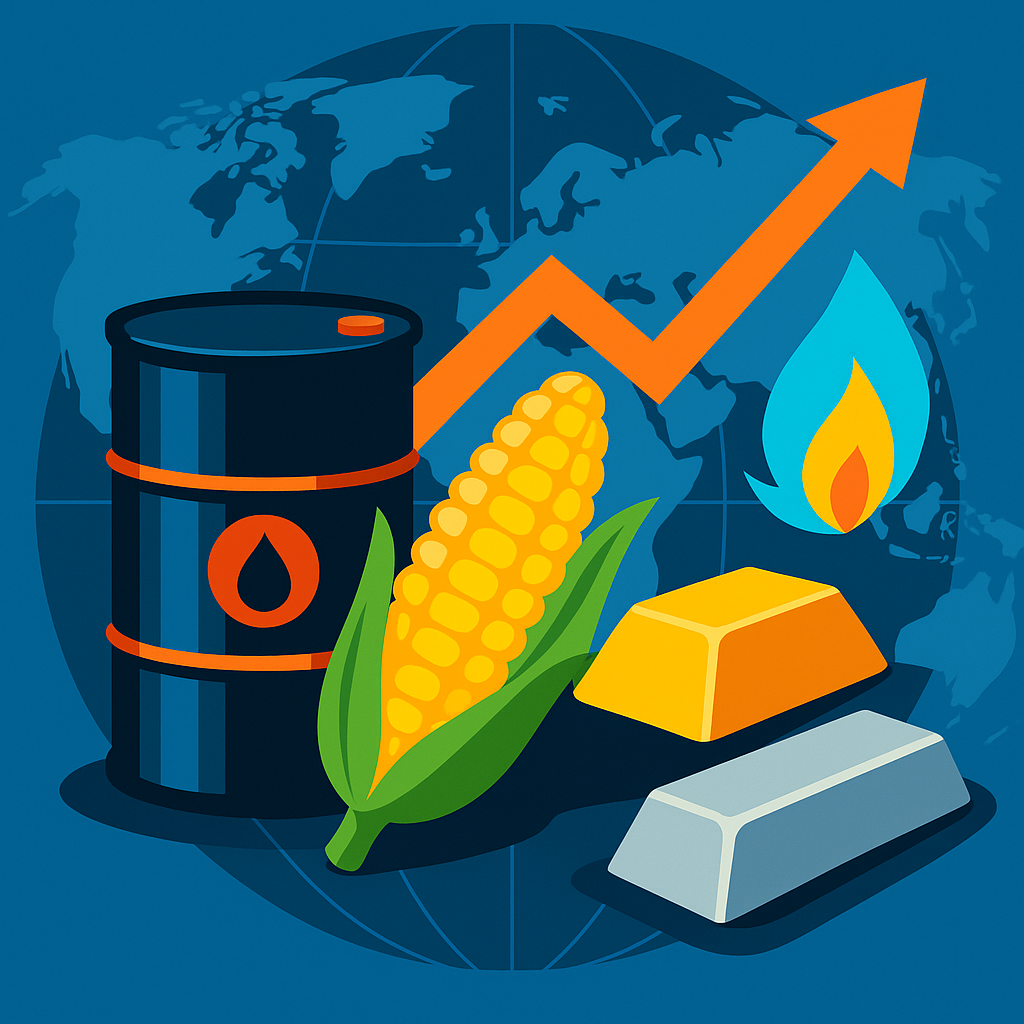Commodities explained in depth—showing what raw-material assets are, how their markets function, why investors rely on them for inflation protection and diversification, and where prices may head next.
1. What Counts as a Commodity?
First and foremost, a commodity is a fungible raw material—oil, gold, wheat, copper—that can be bought or sold interchangeably regardless of producer. Because grades are standardised, prices converge across global exchanges.

2. Major Buckets of the Asset Class
| Bucket | Typical Examples | Primary Drivers |
|---|---|---|
| Energy | Crude oil, natural gas | OPEC policy, inventories, weather |
| Metals | Gold, copper, lithium | Industrial demand, safe-haven flows |
| Agriculture (Softs & Grains) | Wheat, corn, coffee | Crop yields, biofuel policy |
| Livestock | Live cattle, hogs | Feed costs, disease outbreaks |
Consequently, each group reacts to distinct fundamentals, giving portfolios varied return streams.
3. How Commodity Markets Work
Unlike equities, most trading occurs via futures contracts on venues such as the CME, ICE, and LME. Spot buyers—refiners, millers, jewelers—use futures to lock in costs; speculators, meanwhile, provide liquidity. Furthermore, index providers bundle futures into tradable baskets, letting investors gain exposure without rolling contracts themselves.
4. Key Benchmarks to Know
| Index | Coverage | 2021-24 Total Return |
|---|---|---|
| Bloomberg Commodity Index (BCOM) | 24 futures, capped sectors | +27 %, +16 %, -7.9 %, +5.4 % Bloomberg |
| S&P GSCI | Production-weighted 24 futures | Energy-heavy, higher volatility |
| DBIQ Optimum Yield Diversified | Smart-roll, minimized contango | Steady carry profile |
Thus, choosing an index changes sector weights, roll yields, and volatility.
5. Recent Market Pulse (April 2025)
- Gold trades near US $3 316/oz, up 42 % year-over-year amid geopolitical stress.
- Brent crude sits around US $69/bbl, having fallen 23 % in twelve months on ample supply.
- The World Bank forecasts an overall commodity-price drop to a five-year low in 2025 if growth stalls.
Nevertheless, divergence persists: precious metals and soft commodities remain firm, whereas grains lag after bumper harvests.
6. Why Allocate to Commodities?
- Inflation Hedge. Hard assets often rally when consumer prices rise.
- Diversification. Low long-term correlation with stocks and bonds smooths portfolio risk.
- Tactical Opportunities. Cyclical shortages can spark outsized rallies—as witnessed during 2022’s energy squeeze.
7. Risks to Consider
However, commodities carry unique pitfalls:
- Storage & Roll Costs. Futures may sit in contango, eroding returns.
- Geopolitical Shocks. Sudden embargoes or sanctions send prices whipsawing.
- Regulatory Shifts. Carbon taxes or export bans can up-end supply-demand math overnight.
8. Looking Ahead
Going forward, energy-transition metals (lithium, copper) stand to benefit from EV demand, while AI-driven supply-chain analytics could trim inventory swings. Meanwhile, ESG-filtered commodity indices—excluding high-emission fuels—are gaining traction, signalling that sustainability will reshape benchmark design.
Key Takeaways
- Commodities explained: fungible raw materials traded globally via spot and futures.
- Benchmarks like BCOM and S&P GSCI convert dozens of contracts into investible indices.
- Recent data show gold strong, oil softer, and grains still under pressure.
- Ultimately, blending commodities into portfolios can hedge inflation, yet investors must navigate roll costs and volatility.